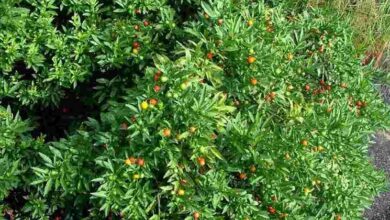Spreading Norfolk Pines: How to Spread Norfolk Pines
Norfolk Island pines ( Araucaria heterophylla ) are graceful, ferocious and persistent trees. Their beautiful symmetrical growth and tolerance to indoor environments make them very popular houseplants. But in warm climates they also thrive outdoors. Propagating Norfolk pines from seed is undoubtedly the answer. Below you will find information on how to propagate Norfolk pines.
The spread of Norfolk pine
The pines on Norfolk Island look a bit like the pines, hence the name, but they don’t even belong to the same family. However, they do come from Norfolk Island in the South Seas, where they grow into straight, majestic trees that can grow up to 200 feet tall.
Norfolk Island pines are not very cold tolerant. They thrive only in U.S. Department of Agriculture Plant Resistance Zones 10 and 11. In the rest of
In the countryside, people bring them indoors in the form of potted plants, often used as non-traditional living Christmas trees.
If you have a Norfolk pine, can you grow more? That’s why Norfolk pine is spreading.
The spread of Norfolk pine
In the wild, Norfolk Island pines grow from the seeds of their cone-shaped pods. This is by far the best way to propagate Norfolk pine. Although it is possible to root the cuttings, the resulting trees do not have the symmetry of branches that makes Norfolk pines so attractive.
How do you propagate Norfolk Island pines from seed? Propagation of Norfolk Island pines in homes begins with the collection of seeds as they mature in late summer or early fall. You will need to break the spherical cone of the tree after it falls.
Collect small seeds and plant them quickly to maximize viability. If you live in USDA zones 10 or 11, plant the seeds outdoors in a shaded area. Norfolk pine propagation also works in a container. Use a pot at least 12 cm (30 cm) deep, placed on a shaded window sill.
Use an even mixture of marl, sand and peat. Push the pointed end of a seed into the soil at a 45-degree angle. Its rounded end should be visible at the top of the soil.
Keep the floor moist. Most seeds come out 12 days after planting, although some may take up to six months, so patience is a virtue.


